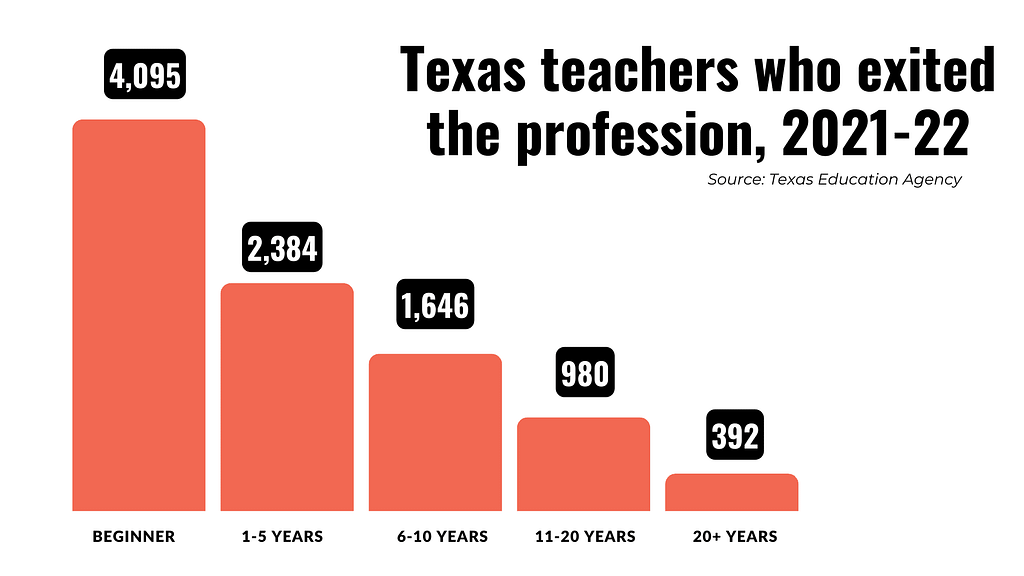Texas goes back to school
This is a preview of our Texas 2036 newsletter with your data-based back to school guide highlighting the important subjects this school year. To receive this weekly look at our work, sign up here.
Texas Back to School 2024: Your data guide
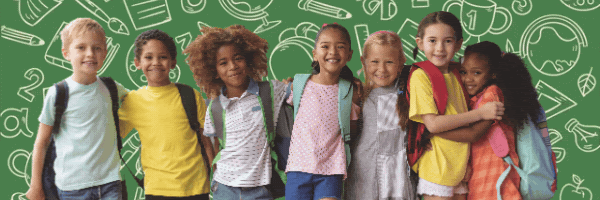
About 5.5 million Texas schoolchildren are returning to classrooms this month. Roughly one in 10 of the nation’s schoolchildren go to school in Texas.
Job No. 1 for our state should be preparing the next generation for success. It is absolutely vital that we keep a laser focus on readiness for life after high school, whether that’s moving on to college or a career.
Let’s talk about this year’s class…
🚸 This year’s kindergarten class is the last born before the COVID-19 pandemic.
🚸 The Texas bicentennial graduating class of 2036 enters first grade this year.
🚸 This year’s graduating class is the first whose entire high school career happened post-COVID.
Three things for parents to get excited about
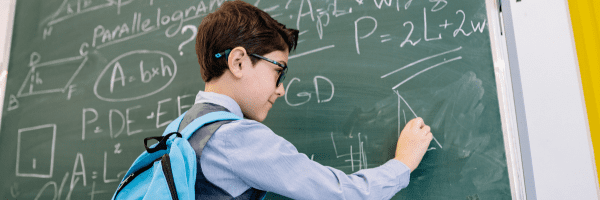
1. Advanced Math: Texas took a big step toward enrolling more eighth graders in Algebra I with the passage of legislation in 2023. The new law requires the top 40% of math scorers in fifth grade to enroll in advanced math courses.
Why is this important? As our Gabe Grantham told El Paso Matters, “Eighth-grade algebra is the gateway to taking advanced math in high school. Taking college-level math courses in high school is predictive of higher rates of postsecondary success.”

2. Dual credit: More and more Texas high school students are getting a jump start on college by enrolling in college courses for which they earn dual credit on their high school and college transcripts.
A recent Texas A&M study found that the percentage of dual credit student enrollment increased from 6.9% in 2001 to 25.7% in 2021. At that rate, almost one-third of all community college students in Texas could be dual credit students within the next decade.

3. Rural Pathway Excellence Partnership: Texas is boosting college and career readiness among rural school districts by creating ways for rural school districts to partner up to boost access to career readiness programs.
Launched in 2019 by Premont ISD, this initiative quickly became a resounding success. By the 2022-23 school year, 54% of students in this rural school innovation zone had earned a certification in the industry of their choice.
The Texas Legislature expanded the program in 2023 to other parts of the state.
Do you know how well your school is doing in preparing your children for college or a career?
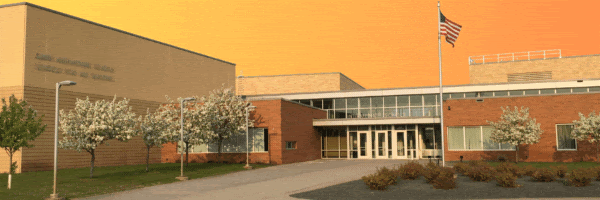
So how do you know if your school is preparing its students for college or for entering the workforce? The short answer is simple. You don’t know.
In the past five years, parents and businesses have been denied access to these school performance measures due to the disruptions caused by the pandemic and then by school district lawsuits to prevent those scores’ release.
Only 42% of Texas students are considered college ready in reading and math, and three in 10 students are not graduating college or career ready.
Too many Texas schoolchildren are advancing through their academic careers without true transparency about the quality of the instruction that they are receiving.
As Texas 2036 Senior Policy Advisor Mary Lynn Pruneda told reporters this week, “Students who were third graders the last time all schools were rated are entering high school this week.”
Voters support higher accountability standards for Texas schools

Nearly half of Texas voters told us they were concerned about the prospects for future generations, while strong majorities supported elevated standards to prepare more students for college or career, according to a recent Texas Voter Poll.
In the poll, 80% of Texas voters expressed support for the Texas Education Agency’s proposed initiative to elevate the standards for school ratings.
Texas teachers: By the numbers
Teachers are incredibly important to the success of our children. Many of us can remember that teacher who made a lasting impression on our lives.
But how well do you know Texas teachers? Did you know, for instance, that teacher hiring has continued to increase while student enrollment is no longer growing as it was.
More than 49,000 teachers were hired in the 2024 academic year, down slightly from 51,000 new hires in 2023, according to new data released Aug. 13 by the Texas Education Agency. New teacher hires, though, remain significantly above pre-pandemic levels ranging between 39,000 and 43,000.
How many teachers does Texas have?
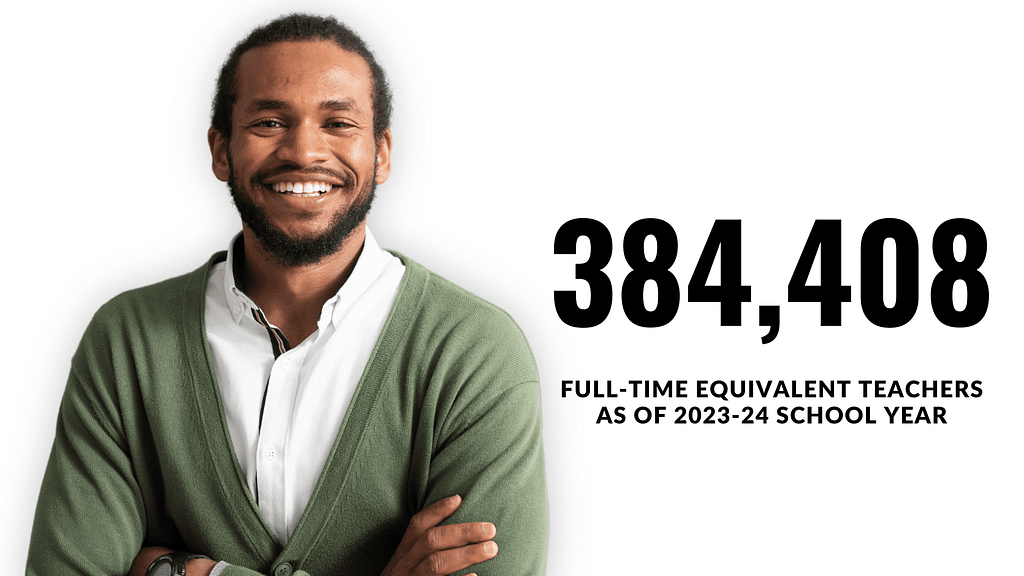
Source: Texas Education Agency, Aug. 13, 2024, presentation to the House Public Education Committee
How many years of experience do Texas schoolteachers have?
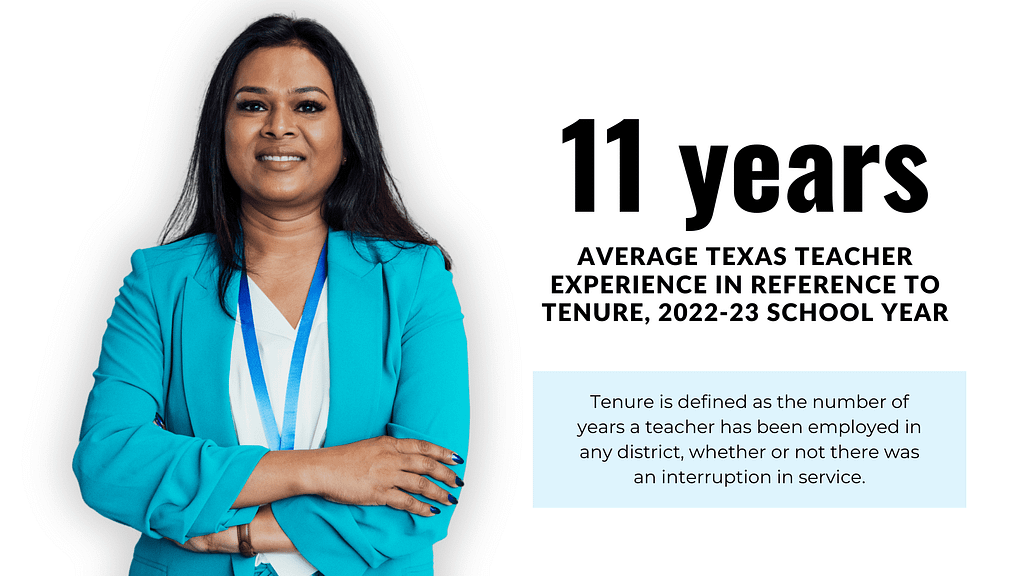
Source: TEA
How much are Texas schoolteachers paid?
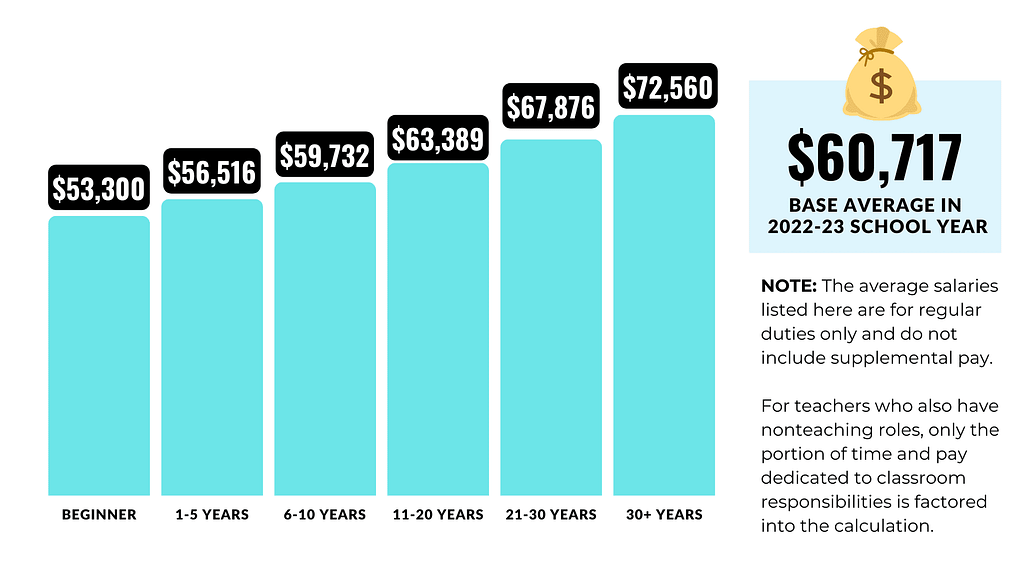
Source: TEA
Average teacher pay for the 2023-24 school year was $62,474 — up 15% in the last five years. But inflation was up 24% over the same period, according to Education Commissioner Mike Morath in an Aug. 12 hearing in the Texas House Public Education Committee.
Why paying teachers more is a good investment

The need for high-quality educators is urgent, with only 53% of students at grade level in reading, 42% in science and 41% in math last school year:
- Teacher turnover is expensive, costing school districts $9,000 to $21,000 to hire and train a replacement for each teacher who leaves.
- The teacher attrition rate for the 2023-24 school year was 12.2%, down slightly from 13.4% in the previous year but still significantly higher than pre-pandemic rates that ranged between 8.6% and 10.6%.
- Novice teachers remain the group that is leaving the profession at the highest numbers.
Data points sourced: Texas Education Agency, Aug. 13, 2024
A new approach to retain high-quality teachers
In June, the Texas Education Agency announced Texas had awarded $290 million for the 2023-24 school year to the Teacher Incentive Allotment, a program aimed at keeping high-quality teachers in the classroom by paying them more.
The goal of TIA, which was established by HB 3 in 2019, is to establish pathways for Texas’ most outstanding teachers to earn six-figure salaries.
Another benefit of this program? Significantly higher teacher retention rates.
For the 2023-24 school year, between 87% and 91% of TIA-designated teachers stayed in the profession while 79% of non-TIA designated teachers stayed in the profession.

Source: Texas Education Agency, Aug. 13, 2024, presentation to the House Public Education Committee
Texas 2036 Policy Advisor Gabe Grantham talks math readiness
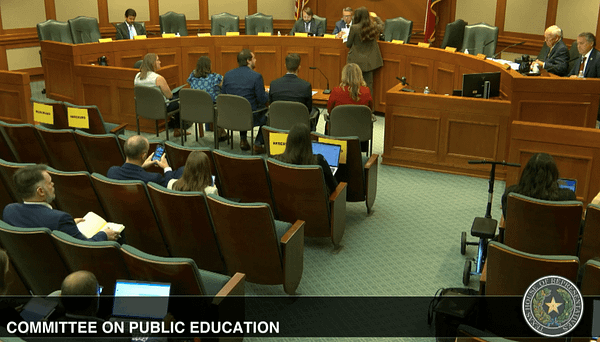
Texas 2036 Policy Advisor Gabe Grantham testified this week before the House Public Education Committee on the urgent need to improve math readiness.
“The data is clear,” he said. “Our students are not currently meeting the math proficiency levels necessary for success.”
To solve the problem, Texas must:
- Invest in targeted interventions, especially for our youngest learners
- Provide ongoing professional development for our teachers, focusing on early identification of math struggles
- Equip parents with the tools they need to identify the extent of their children’s math struggles.
Momentum to ban cell phones in Texas surges
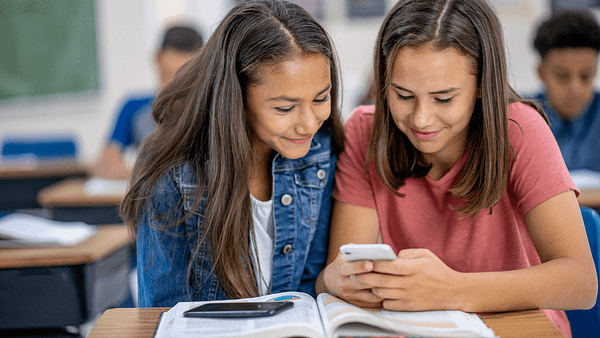
Schools across the state are joining a national trend led by Florida and California toward limiting students’ use of cell phones at school.
The movement is spurred by growing research, including this multinational study, that smartphones are a distraction to students’ academic performance, even by other students’ phones.
Education Commissioner Mike Morath told lawmakers this week that academic proficiency in the U.S. for eighth graders peaked in 2013, a few years after the widespread adoption of the smartphone.
Mounting research, he said, demonstrates that increased screen time leads to distraction and lower student performance.
School districts all across Texas are moving ahead with bans on cell phone use. Here’s a sampling:
- Fort Worth (Fort Worth Star-Telegram)
- Houston (Houston Chronicle)
- Katy (Chron.com)
- Ann Richards School for Young Women Leaders (Austin) (Fox 7)
- Killeen, La Vega ISD (Killeen Daily Herald)
And what about AI?
Educators are moving past initial fears that artificial intelligence would just lead to increased cheating in the classroom. Researchers at Stanford University have found that educators are now seizing on opportunities to use AI for:
- coaching students on writing
- automating labor-intensive tasks like grading or lesson planning
“AI is not going away,” said Victor Lee, director of Stanford’s CRAFT (Classroom-Ready Resources about AI for Teaching) initiative. “We need to teach students how to understand and think critically about this technology.”
Meanwhile, some Texas schools are looking at ways to introduce AI into its classrooms. Here are a few examples:
Other school districts, such as Waco ISD and Liberty Hill ISD, are looking to AI to improve campus safety. 👮 (TASB)
Do you agree with efforts to ban smartphones or AI in the classroom?


